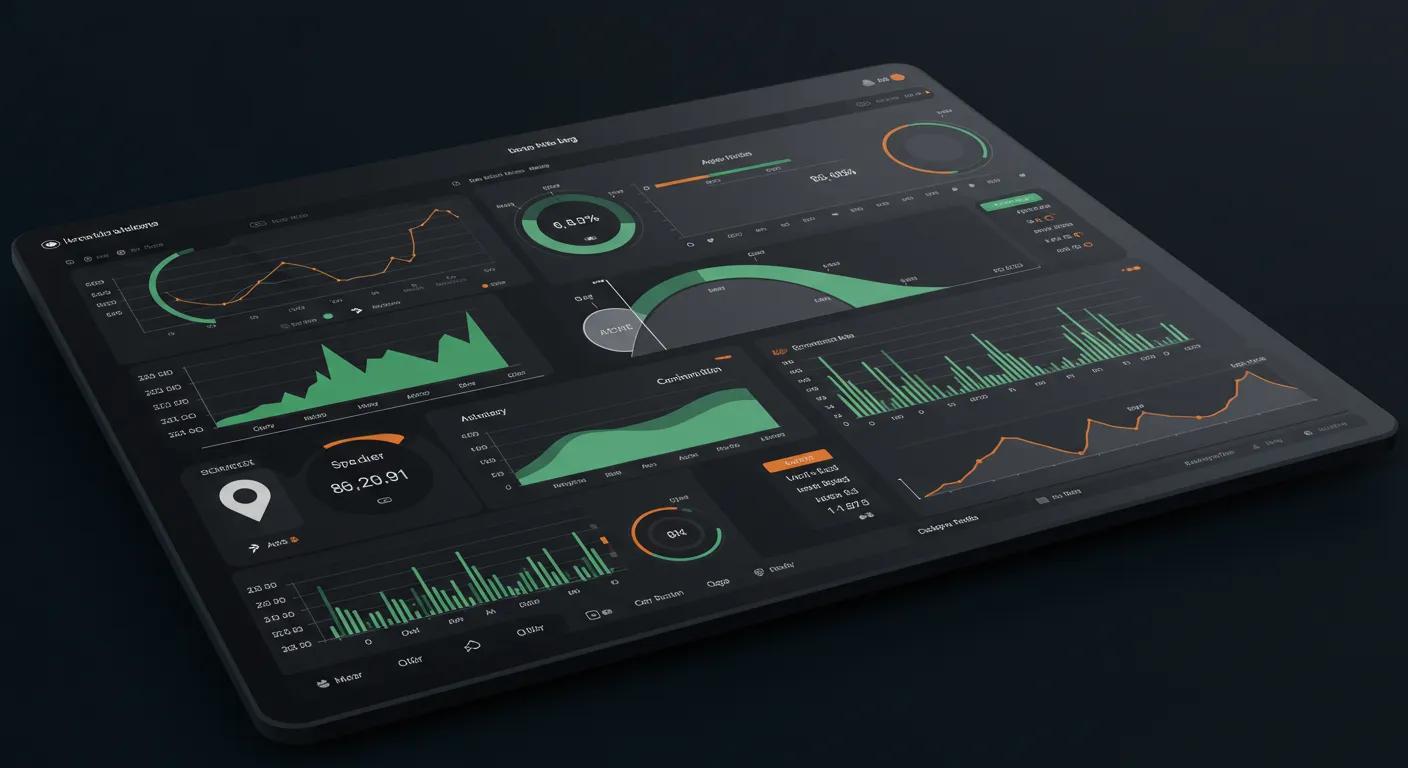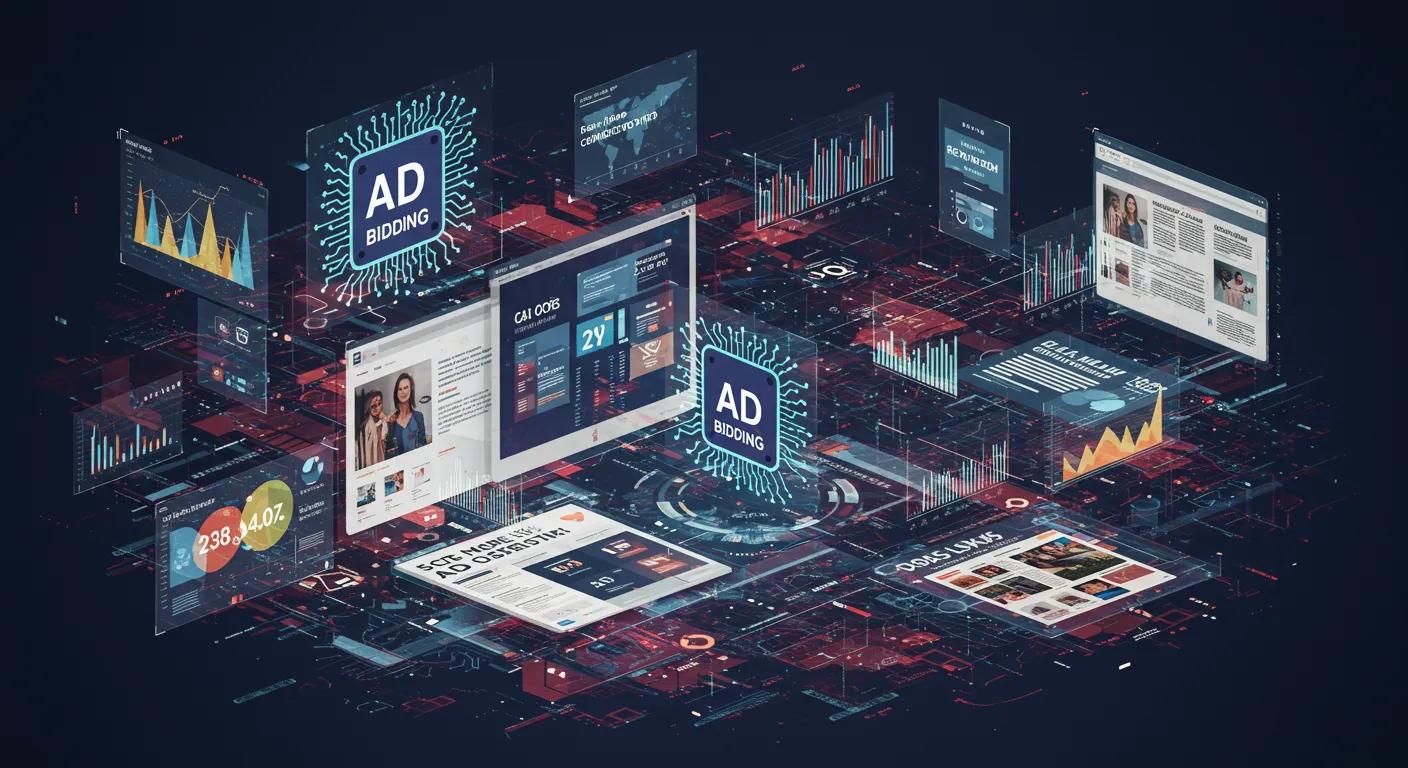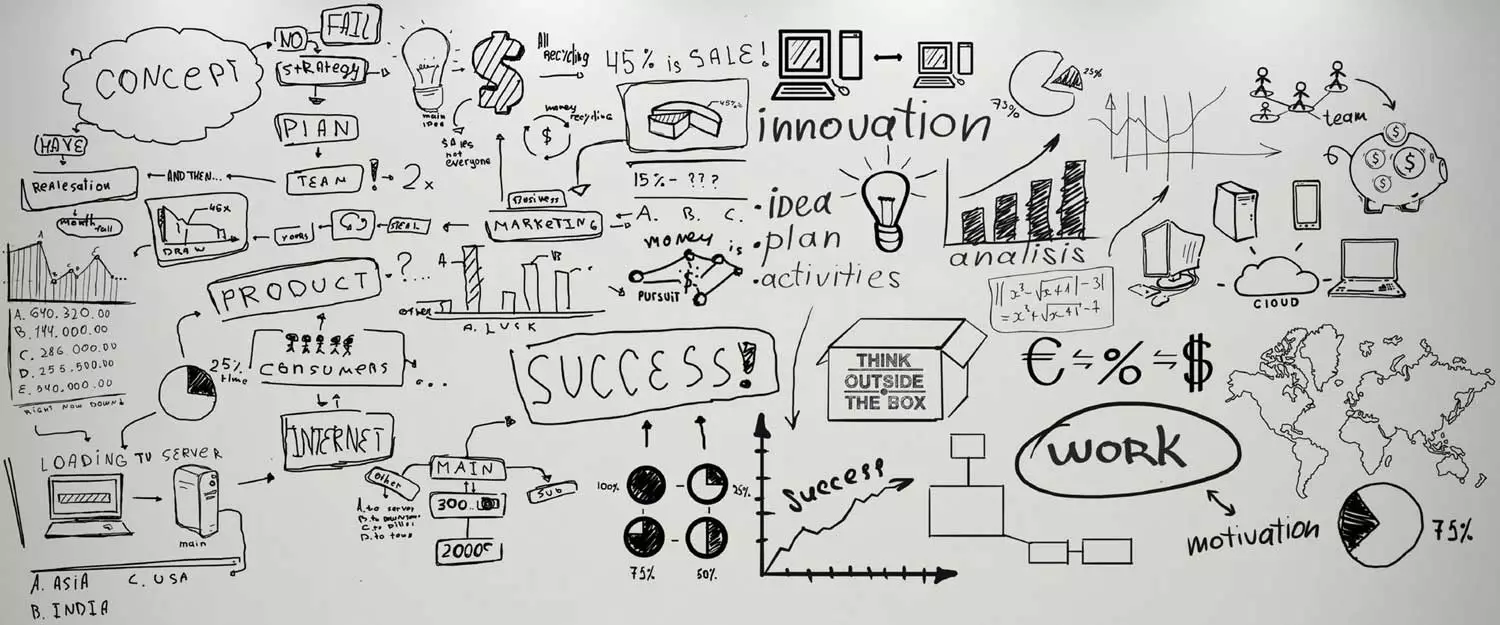Unlocking Pay-Per-Click Advertising Strategies for Success
In the dynamic landscape of digital marketing, Pay-Per-Click (PPC) advertising remains a cornerstone for businesses aiming to achieve immediate visibility, drive targeted traffic, and generate measurable returns. As we navigate 2025, the sophistication of PPC platforms, coupled with evolving consumer behaviors and privacy regulations, demands a strategic and adaptive approach to pay-per-click advertising strategies. This comprehensive guide delves into the foundational principles, advanced techniques, and emerging trends that define successful PPC campaigns today, offering actionable insights for sustainable growth.
“In an advertising ecosystem constantly reshaped by technology and user privacy, the true differentiator in PPC isn’t just budget, but the agility and intelligence of your strategy. It’s about anticipating shifts and optimizing relentlessly.” – Jorge Leger, Founder and Digital Marketing Consultant at Astound Media.
Foundational Pay-Per-Click Advertising Strategies: Building a Strong Base
Effective PPC begins with a robust foundation. Understanding these core elements is crucial before diving into more advanced strategies.
- Keyword Research and Selection: The bedrock of any PPC campaign. Utilizing tools like Google Ads Keyword Planner (which saw its latest significant iteration in 2024) allows advertisers to identify high-intent keywords, understand search volume, and assess competition. A balanced keyword strategy includes broad match for discovery, phrase match for relevance, and exact match for precision, complemented by a vigilant negative keyword list to prevent wasted spend.
- Compelling Ad Copy and Creatives: Beyond keywords, your ad’s message is paramount. Crafting clear, concise, and persuasive ad copy that directly addresses user intent is critical. Incorporating ad extensions, such as sitelinks, callouts, and structured snippets, can significantly enhance ad visibility and provide additional information, potentially boosting click-through rates. For instance, well-optimized sitelinks can improve CTRs by 10-15% by offering users more relevant entry points to your site.
- Understanding Bidding Models: PPC platforms offer various bidding strategies, from manual CPC to automated smart bidding. Manual bidding provides granular control but is time-intensive. Automated strategies leverage machine learning to optimize bids in real-time for specific goals, which we will explore in detail.
Advanced Campaign Structuring & Targeting
Moving beyond the basics, advanced pay-per-click advertising strategies focus on precision and efficiency, ensuring every advertising dollar works harder.
Granular Campaign Structure
A well-organized campaign structure is vital for control and optimization. Instead of broad campaigns, consider segmenting by:
- Product/Service Categories: Grouping similar offerings allows for highly relevant ad copy and landing pages.
- Geographic Locations: Tailoring campaigns to specific regions, cities, or even neighborhoods.
- Device Types: Optimizing bids and ad experiences for mobile, desktop, or tablet users.
- Match Types: Separating exact, phrase, and broad match keywords into different ad groups or campaigns for better bid management and performance analysis.
- Negative Keywords: Consistent negative keyword audits are essential to prevent wasted spend on irrelevant searches. Regularly refining these lists can slash wasted spend by up to 20%, ensuring your budget targets genuinely interested prospects.
Audience Segmentation and Remarketing
Targeting the right audience at the right time is a hallmark of advanced PPC. This involves:
- Demographic Targeting: Reaching users based on age, gender, parental status, and household income.
- Interest and Affinity Audiences: Targeting users based on their demonstrated interests and online behaviors.
- In-Market Audiences: Identifying users actively researching products or services similar to yours.
- Remarketing (Retargeting): A powerful strategy to re-engage users who have previously interacted with your website or app. By showing tailored ads to these warm leads, conversion rates can be significantly higher.
Cross-Platform Synchronization
A holistic PPC strategy extends beyond a single platform. Synchronizing efforts across major advertising channels maximizes reach and efficiency:
- Google Ads: Dominant for search and display, offering vast reach and sophisticated targeting.
- Bing Ads (Microsoft Advertising): Often overlooked, Bing can provide a cost-effective alternative with a distinct audience demographic, particularly for older, higher-income users.
- Meta Ads (Facebook/Instagram): Unparalleled for social media targeting, leveraging rich demographic and interest data for brand awareness and lead generation.
- Amazon Ads: Crucial for e-commerce businesses, allowing direct advertising on product pages and search results within the Amazon ecosystem. Regular optimization of negative keyword lists on Amazon PPC is key to preventing wasted spend and ensuring ad visibility for relevant product searches.
“Working with Astound Media transformed our PPC campaigns. Their strategic approach to audience segmentation and granular campaign structuring not only reduced our CPA but also significantly boosted our conversion rates. We finally feel confident in our digital advertising spend!”
– Sarah Chen, Marketing Director at InnovateTech Solutions
The Rise of AI-Driven Bidding Strategies

Automation has revolutionized bid management, shifting the focus from manual adjustments to strategic oversight. AI and machine learning in pay-per-click advertising strategies analyze historical performance and real-time auction signals to adjust bids for each auction, optimizing for conversions or revenue. This technology has advanced significantly since 2024, offering more precise and adaptive solutions.
- Target CPA (Cost-Per-Acquisition): This strategy automatically sets bids to help you get as many conversions as possible at or below your target cost-per-acquisition. It’s ideal for campaigns focused on lead generation or specific conversion actions.
- Target ROAS (Return On Ad Spend): Designed for e-commerce, Target ROAS automatically sets bids to help you get as much conversion value as possible at or below your target return on ad spend. It’s perfect for maximizing revenue from your ad budget.
- Maximize Conversions: This strategy aims to get the most conversions for your budget. It’s a good starting point for new campaigns or when you want to maximize conversion volume without a specific CPA target.
- Maximize Conversion Value: Similar to Maximize Conversions, but prioritizes the total value of conversions rather than just the number, useful when different conversions have varying monetary values.
The shift towards AI-driven bidding frees up advertisers to focus on higher-level strategy, creative development, and landing page optimization, rather than tedious manual bid adjustments.
First-Party Data & Privacy-Compliant Targeting in 2025
With the impending deprecation of third-party cookies and heightened privacy regulations, leveraging first-party data has become paramount for effective and compliant targeting. These segments deliver up to 20 percent higher click rates when ads address specific customer needs informed by past behavior, a statistic that continues to hold true in 2025.
- Cookie Deprecation and Its Impact: As browsers like Chrome phase out third-party cookies, advertisers must pivot to alternative data sources. This shift emphasizes the importance of direct customer relationships and owned data.
- Leveraging GA4 Audiences: Google Analytics 4 (GA4) is designed with a privacy-centric future in mind. It allows for the creation of robust first-party audiences based on user behavior on your website or app. These audiences can then be seamlessly integrated with Google Ads for highly targeted campaigns.
- CRM Integrations for Enhanced Targeting: Integrating your Customer Relationship Management (CRM) system with advertising platforms allows you to upload customer lists (e.g., email addresses) for custom audience targeting. This enables you to reach existing customers with specific offers, exclude them from prospecting campaigns, or create lookalike audiences to find new prospects with similar characteristics. This approach is highly effective and privacy-compliant, as it relies on data customers have directly provided.
Performance Measurement & Continuous Optimization
Successful PPC is an iterative process. Continuous monitoring and optimization based on key performance indicators (KPIs) are essential for refining campaign decisions and maximizing ROI within your pay-per-click advertising strategies. Implementing Google Ads conversion tracking by embedding a tracking code snippet on conversion pages (such as a ‘Thank You’ page) and linking to Google Analytics is fundamental for accurate measurement.
Interpreting Key Performance Indicators (KPIs)
- Click-Through Rate (CTR): The percentage of people who see your ad and click it. A high CTR indicates ad relevance and appeal.
- Quality Score: Google’s rating of the quality and relevance of your keywords, ads, and landing pages. A higher Quality Score can lead to lower costs and better ad positions.
- Conversion Rate: The percentage of clicks that result in a desired action (e.g., purchase, lead form submission). This is a direct measure of campaign effectiveness.
- Cost Per Acquisition (CPA): The average cost to acquire one customer or lead. Lower CPA indicates greater efficiency.
- Return On Ad Spend (ROAS): The revenue generated for every dollar spent on advertising. A critical metric for e-commerce, indicating profitability.
Refining Campaign Decisions
Regularly analyze these KPIs to identify areas for improvement. This includes A/B testing ad copy and creatives, optimizing landing pages for better conversion, adjusting bids based on performance, and refining keyword lists. For example, if a keyword has a high CTR but a low conversion rate, it might be attracting irrelevant traffic, signaling a need for more specific negative keywords or ad copy adjustments.
Emerging PPC Trends in 2025

The PPC landscape is constantly evolving. Staying ahead of emerging trends ensures your campaigns remain competitive and effective.
- Voice Search Optimization: With voice assistants managing over 30 percent of searches (a figure that continues to grow in 2025, according to recent industry reports), tailoring PPC ads for conversational queries, like ‘where can I donate locally’, ensures visibility for voice-driven searches and aligns bids with long-tail, question-based keywords. This requires a shift from traditional keyword matching to understanding natural language intent.
- Predictive Targeting: Leveraging AI to predict future customer behavior based on past interactions and external signals. This allows advertisers to proactively target users who are most likely to convert, even before they explicitly search for a product.
- Visual Ad Formats & Video PPC: Beyond text, visual ads (image ads, shoppable ads) and video campaigns are gaining prominence. Platforms like YouTube, TikTok, and even Google’s Discovery campaigns offer rich opportunities for engaging users with compelling visual content, driving both brand awareness and direct response.
Case Study: EcoBloom Organics – A Small Business Success Story
EcoBloom Organics, a small e-commerce brand selling sustainable home goods, faced the challenge of increasing online sales and brand awareness on a limited budget. Their initial PPC efforts yielded inconsistent results, with high costs and fluctuating conversion rates.
The Strategy:
- Granular Campaign Restructuring: EcoBloom segmented their Google Ads campaigns by product category (e.g., “Eco-Friendly Cleaning,” “Sustainable Kitchenware”) and then by specific product lines within those categories. This allowed for highly relevant ad groups and landing pages.
- Aggressive Negative Keyword Management: They conducted weekly audits of search terms, adding hundreds of irrelevant terms (e.g., “free,” “DIY,” “wholesale”) to their negative keyword lists, significantly reducing wasted spend.
- First-Party Data Activation: Leveraging their existing customer email list, EcoBloom created custom audiences in Google Ads and Meta Ads. They ran remarketing campaigns offering a small discount to past purchasers and used lookalike audiences to find new prospects with similar profiles.
- Smart Bidding Implementation: Once sufficient conversion data was collected, they switched to Target ROAS bidding for their Google Shopping campaigns and Target CPA for their search campaigns focused on lead generation (newsletter sign-ups).
- A/B Testing Ad Copy: They continuously tested different headlines and descriptions, focusing on benefits like “sustainable,” “non-toxic,” and “ethically sourced,” which resonated with their target audience.
The Results:
Within six months, EcoBloom Organics saw a remarkable transformation:
- 35% Reduction in CPA: By eliminating irrelevant clicks and optimizing bids.
- 50% Increase in Conversion Rate: Driven by more relevant ads, improved landing pages, and effective remarketing.
- 2.5x ROAS: Their ad spend became significantly more profitable, allowing them to scale their campaigns.
- Increased Brand Awareness: Remarketing and lookalike campaigns expanded their reach to a highly relevant audience.
This case study illustrates that even with a modest budget, strategic PPC optimization, combined with smart use of data and automation, can deliver substantial and sustainable growth for small businesses.
Conclusion: Sustaining PPC Success Through Continuous Optimization
In 2025, PPC advertising is more sophisticated and data-driven than ever. Achieving and sustaining success requires a commitment to continuous learning, adaptation, and optimization. By mastering foundational principles, embracing advanced strategies like granular structuring and cross-platform synchronization, leveraging AI-driven bidding, and prioritizing privacy-compliant first-party data, businesses can unlock the full potential of their pay-per-click advertising strategies.
The digital landscape will continue to evolve, bringing new trends like advanced voice search capabilities and innovative visual ad formats. Staying agile, regularly analyzing performance metrics, and being prepared to pivot strategies are the hallmarks of long-term PPC success. Ultimately, continuous optimization isn’t just about improving immediate campaign results; it’s about building a resilient, efficient, and highly profitable advertising ecosystem that supports your business’s growth for years to come.
Ready to Elevate Your PPC Strategy?
Unlock unparalleled growth with expert-driven PPC campaigns tailored to your unique business goals. Contact us today, and let’s get your PPC campaigns in order.
About the Author
Jorge is the Founder of Astound Media, a New York–based digital agency focused on helping organizations grow through web design and marketing strategy. With 10+ years of experience in WordPress, SEO, and automation, he collaborates with small businesses and nonprofits to create high-impact websites and campaigns. He is passionate about empowering entrepreneurs to succeed online. Connect with Jorge on LinkedIn.




